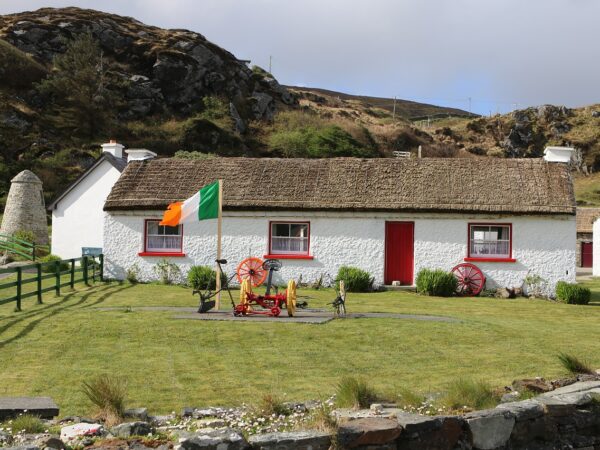Irish Canadians are Canadians who trace their ancestry back to immigrants who originated in Ireland and Northern Ireland. 1.2 million Irish immigrants arrived, 1825 – 1970, at least half of those between 1831-1850. By 1867 they were the second largest ethnic group (after the French) and included 24% of Canada’s population. The 1931 general census counted 1,230,000 Canadians of Irish descent, half of whom lived in Ontario. About one-third were Catholic in 1931 and two-thirds Protestant.
The Irish immigrants were mostly Protestants before the famine years of the 1840s, although some Catholics came during the colonial period to both Canada and the United States when Catholics arrived in large numbers. However, most of the Catholic Irish after 1850 usually went to the United States, because of better economic prosperity and less British association of the British Empire. They also went to England, Australia, or New Zealand.
The 2006 Census by Statistics Canada, the Official Statistics Office of Canada showed that the Irish were the 4th largest ethnic group with 4,354,000 Canadians of full or partial Irish ancestry or 14% of the total Canadian population. This was a large and significant increase of 531,495 since the 2001 census, which counted 3,823,000 respondents indicating Irish ethnicity. According to the 2011 National Home Survey, the population of Irish ancestry has increased since then 2,006 to 4,544,870.
Irish in Canada
Irish has a long and rich history in Canada, dating back centuries. The first recorded Irish presence in the present Canadian area dates from 1536, when Irish fishermen from Cork went to Newfoundland.
After the permanent settlement in Newfoundland by the Irish in the early 19th century, all from Waterford, increased, immigration of the Irish elsewhere in Canada began in the decades after the War of 1812. Between 1825 and 1845, 60% of all immigrants to Canada were Irish; in 1831 alone, approximately 34,000 arrived in Montreal.
But the peak period of Irish entry into Canada in terms of net numbers occurred in the 1830-50 periods, when 624,000 arrived, or 31,000 a year; smaller numbers arrived in Newfoundland. In addition to Upper Canada (Ontario), the Maritime Colonies of Nova Scotia, Prince Edward Island, and New Brunswick, especially St. John, were popular destinations.
At this time Canada was the destination of the most dispossessed Irish Catholics, purged of the land’s fortunes and the departure of Liverpool’s overcrowded docks, numbering in the hundreds of thousands. The tolls of passage to Canada were much lower than those to the United States, Australia, and New Zealand, because of such factors as distance and the use of empty, returning ships of timber to transport the masses.
Demographics
Count, of course, excludes those with some Irish ancestry. Historian and journalist Louis-Guy Lemiux…… claims that about 40% of Quebecers have Irish ancestry on at least one side of their ancestry. Avoided by Protestant speakers of English, it was very common for Catholic Irish to settle among and intermarry with Catholic French speakers. Assuming that many other Francophones throughout Canada similarly have Irish roots, in addition to those who can simply identify as Canadian, the total number of Canadians with some Irish ancestry would exceed 20% of the Canadian population.
Protestant and Catholic Tensions
Tensions between Irish Protestants and Irish Catholics were widespread in 19th-century Canada, with many episodes of violence and anger, especially in Atlantic Canada and Ontario.
The Orange Order, with its two main principles, anti-Catholicism and loyalty to Great Britain, flourished in Ontario. Primarily coinciding with the Protestant Irish settlement, its role permeated the political, social, and community as well as religious lives of its followers. Spatially, the Orange Lodges were founded as an Irish Protestant extension of the settlement north and west of its original focus on the Lake Ontario plains. Although the number of active members, and thus their influence, may have been overstated, Orange influence was considerable and comparable to Catholic influence in Quebec.
In Montreal in 1853, the Orange Order organized speeches by the desperately anti-Catholic and anti-Irish former priest Alessandro Gavazzi, leading to a strong confrontation between the Irish and the Scots. St. Patrick’s Day processions in Toronto were often disrupted by tensions that got out of hand to the point where the parade was cancelled permanently by the mayor in 1878 and not re-established until 110 years later in 1988. The Jubilee riots of 1875 shook Toronto at a time when sectarian tensions ran at their highest. The Irish Catholics in Toronto were a militant minority among the Protestant population, which included a large Irish Protestant contingent, strongly handed over to the Orange Order.
